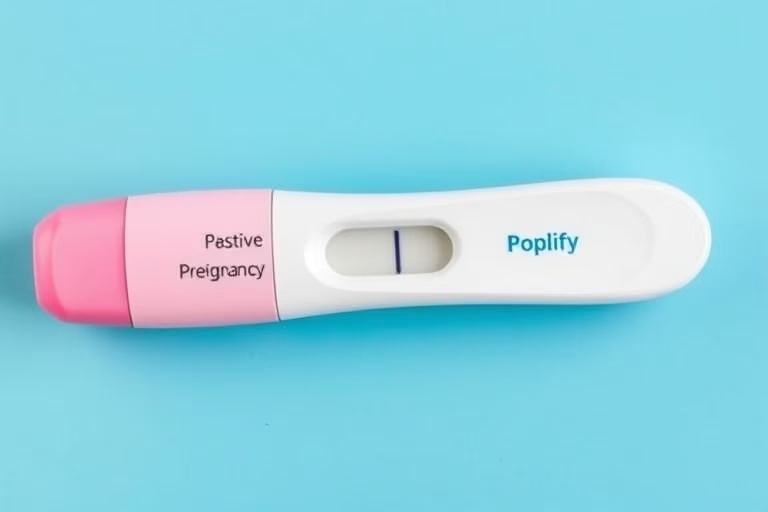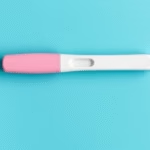Understanding Positive Pregnancy Test with Implantation Bleeding
When women are trying to conceive, the moment of taking a pregnancy test can be both exciting and nerve-wracking. A positive pregnancy test indicates that a pregnancy is likely, but there are other factors at play, such as implantation bleeding. This occurrence can often confuse individuals who may not understand its significance. Implantation bleeding typically occurs when a fertilized egg attaches to the uterine lining, leading to slight bleeding or spotting. Recognizing the signs of implantation bleeding can help individuals differentiate between a possible sign of pregnancy and their menstrual period.
This article will explore the connection between a positive pregnancy test and implantation bleeding, shedding light on the symptoms, timing, and what to expect during this significant phase in a woman’s reproductive health. Understanding these aspects is essential to provide clarity about early pregnancy signs and assist women in navigating their choices during this important life event.
What is Implantation Bleeding?
Implantation bleeding refers to light spotting that some women may experience when a fertilized egg attaches itself to the uterine lining. This usually occurs around six to twelve days after conception, which may be before a missed period. The bleeding is typically light pink or brown and lasts for a few hours to a few days.
Unlike a regular menstrual cycle, implantation bleeding is not accompanied by the same level of flow or cramping. Recognizing this distinction is crucial for women seeking to understand early pregnancy signs. The timing and nature of the bleeding can also influence when a pregnancy test can be taken for accurate results.
It is important to consult a healthcare provider if there are concerns about the bleeding, as it may signify other underlying conditions.
Timing of Implantation Bleeding
The timing of implantation bleeding can vary significantly among individuals. It generally occurs about a week to two weeks after conception. This means that if a woman has irregular menstrual cycles, pinpointing the exact time of ovulation can be challenging. It may coincide with the time when a woman expects her period, leading to confusion.
Women are encouraged to wait until they miss their period to take a pregnancy test. However, if they experience light spotting around the time their period is expected, it might be worthwhile to take a pregnancy test in that time frame. Understanding this timeline allows individuals to better gauge their potential pregnancy.
Exploring this timing helps women recognize patterns in their menstrual cycles and understand their reproductive health.
Signs of Pregnancy
This section will discuss various early signs of pregnancy that women may experience in conjunction with implantation bleeding. In addition to spotting, common signs can include:
- Missed Period: This is often the first recognizable sign of pregnancy.
- Nausea: Many women experience morning sickness, which can begin as early as two weeks post-conception.
- Breast Changes: Tenderness, swelling, or changes in the areola are common signs.
- Fatigue: Many women feel drastically more tired than usual due to hormonal changes.
- Frequent Urination: Increased hormones may lead to more frequent trips to the bathroom.
Being aware of these potential signs allows women to better assess their situation and consider seeking medical advice if needed. It is also important to remember that not every woman will experience the same signs, and some may experience symptoms more prominently than others.
How to Take a Pregnancy Test
When it comes to taking a pregnancy test, timing and technique are crucial. For the most accurate results, the best time to take a home pregnancy test is after a missed period. To ensure the highest level of accuracy, follow these steps:
- Read Instructions: Every pregnancy test may have slightly different instructions. Read them carefully before proceeding.
- Ensure Quality: Make sure the test has not expired and is from a reputable brand.
- Morning Urine: Early morning urine contains the highest concentration of the pregnancy hormone hCG.
- Wait the Recommended Time: After using the test, allow it to sit for the instructed time before interpreting the results.
- Follow Up: If positive, schedule an appointment with a healthcare provider for guidance.
By using the test correctly and timing it appropriately, individuals can expect accurate results. Early detection can provide essential information for making informed choices about pregnancy health.
Possible Confusions with Implantation Bleeding
Women may confuse implantation bleeding with other forms of bleeding, such as menstruation or irregular bleeding from other causes. Understanding the distinctions can help women make informed decisions regarding their health. Here are some points to clarify the differences:
- Color: Implantation bleeding is often light pink or brown, while menstrual blood is usually bright red and heavier.
- Flow: Implantation bleeding is much lighter and shorter in duration than a typical period.
- Timing: Implantation bleeding can occur before a missed period, whereas menstruation is predictable based on a woman’s cycle.
Being informed about these criteria enables better personal health management and ensures timely consultation with healthcare providers when necessary.
When to Consult a Healthcare Provider
It is vital for individuals to recognize when professional medical guidance is necessary. Here are some signs that indicate it’s time to contact a healthcare provider:
- Heavy Bleeding: If bleeding is heavy or accompanied by severe cramping, immediate advice is needed.
- Confusion about Symptoms: If a woman is unsure whether they are experiencing implantation bleeding or a menstrual period, seeking advice can clarify uncertainties.
- Other Symptoms: Symptoms such as extreme fatigue, fainting, or pelvic pain may warrant medical evaluation.
Early intervention can help ensure the health and safety of both the individual and the potential pregnancy, providing reassurance throughout the process.
Final Thoughts
In conclusion, understanding the connection between a positive pregnancy test and implantation bleeding is crucial for women navigating early pregnancy signs. Knowing the timing, signs, and when to seek medical advice can enhance a woman’s awareness of her reproductive health. The experience can be filled with uncertainty, yet knowing what to expect can empower individuals during this significant time in their lives. Acknowledging the signs and symptoms of pregnancy allows for informed decision-making while considering healthcare providers when needed.
Here are five frequently asked questions regarding implantation bleeding and pregnancy tests:
- What if I experience spotting but the pregnancy test is negative? It could indicate stress, hormonal fluctuations, or a later period; retesting a few days later may provide clarity.
- Is implantation bleeding painful? Typically, it is not painful and may be accompanied by mild cramping.
- Can I have a positive pregnancy test with implantation bleeding? Yes, many women report a positive pregnancy test shortly after experiencing implantation bleeding.
- How long should implantation bleeding last? Implantation bleeding usually lasts a few hours to a couple of days at most.
- What should I do if my period is late and I experience light spotting? It is recommended to take a pregnancy test and consult with a healthcare provider if necessary.
Through understanding these aspects, women can embrace their journey towards motherhood with confidence and clarity.
Further Reading
What Type of Psychotherapy Is Best for Anxiety?







